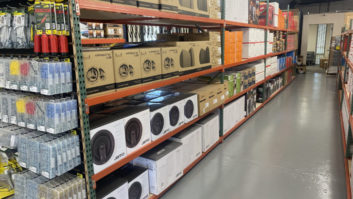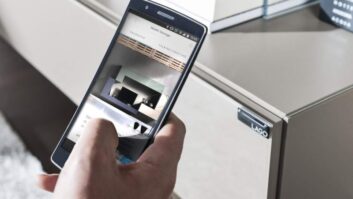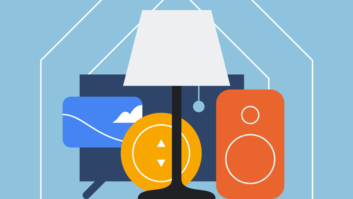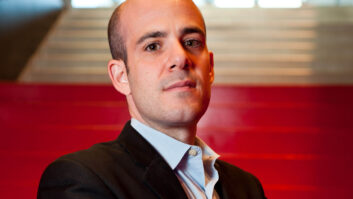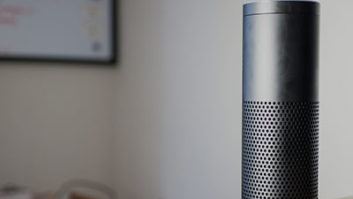
Demand for home-automation products is rising in the DIY and custom-install channels, marketers agree.
In fact, 54 percent of U.S. consumers ages 25 and up plan to buy at least one smart-home device in the next year, according to a recent survey commissioned by Icontrol Networks, the home-automation platform provider.
Still, challenges remain in both segments of the market as new players, standards and technologies have exploded.
To analyze the market’s growth and forecast its future, TWICE assembled a group of suppliers offering DIY and custom-installed home-automation solutions. Here’s what they had to say in response to emailed questions:
SALES GROWTH
TWICE:How quickly is the DIY home-automation market growing, and why?
Brad Hintze, C4: It is difficult to say at the moment with any certainty. We have seen some public reports regarding the DIY market with conflicting information in respect to growth. On the one hand, there is tremendous potential for growth due to the various industries that companies can target with DIY IoT products. But there are plenty of examples out there that dampen the impact as a whole due to issues of security breaches, lack of reliable performance, and lack of communication- protocol standards for these devices to speak to each other.
Joe Gerber, Insteon: Last year, Gartner forecast that 4.9 billion connected things will be in use in 2015, up 30 percent from 2014, and expects that number will reach 25 billion by 2020. This rapid adoption is driving the DIY home-automation market in a number of ways. First, there are new Kickstarter products and start-up companies that are riding the wave and bursting onto the scene. Secondly, the technology giants like Apple and Google are now making moves into the space. All of this advancement has energized the marketplace and, ultimately, it has engaged consumers who now want to know more and experience the automated home for themselves.
TWICE:Which segments of the DIY market are growing the quickest?
Nathan Smith, Wink: We see many people starting out on their smart home with lighting (given the ease of installation and affordability) and adding additional products like thermostats and door locks over time. One of the fastest growing categories currently is security as more and more people understand how smart cameras, sensors, smoke alarms, and the like can be used to give you peace of mind while you’re away from home.
Tom Kerber, Parks: Lights, locks, thermostats and networked cameras are the leading categories of smart products. Parks Associates believes that smart light bulbs will outpace other categories. According to a Q2 2015 Parks Associates Survey of 10,000 broadband households, 30 percent of those households intend to purchase smart light bulbs in the next year.
In Q2 2015, 61 percent of owners of standalone smart products installed the products themselves. Self-installation is lower among owners of smart sprinkler controllers at 37 percent, and higher among buyers of networked cameras at 72 percent.
Gerber: Lighting has always been the fastest growing segment, and we project that it will continue to be for the foreseeable future. It’s the easiest element for newcomers to understand, but sensors are a close second.
TWICE: How quickly is the market growing for custom- installed home-control systems?
Hintze: Control4 has the benefit of receiving data from a variety of sources for our reporting metrics internal to the company. You could use a bunch of different metrics as an industry barometer, but which is the most important? This year we have grown our dealer network to more than 3,400 active dealers worldwide, up more than 200 from the previous year. This could be seen as an important factor in the growth of the CI channel as more and more dealers are coming online and offering smart home products and services to customers.
But a deeper dive could yield even more evidence that the market is growing because we can see a lot of IT and security companies coming into the space to accomplish the same thing: become technology managers for the entire home. So in this respect, it is growing very quickly, and it can be attributed at the very least to consumer awareness about IoT products, and the true need for a professionally installed solution.
Kerber: The security industry is the leading channel for professionally installed smart home services. Adding home control products to security systems and the ability to remotely monitor and control the system from a mobile device has expanded the market for professionally monitored security services. Last year the market for professionally-monitored security grew by 15 percent.
Gerber: Similar to the consumer DIY segment, we’re seeing increased demand in the custominstalled home-control market. In fact, we recently announced that AVAD, a leading provider of solutions to the residential and commercial custom installation markets, is adding Insteon products to its list of offerings. This is a direct result of increased demand coming directly from the customers and resellers in the custom installation market.
See more from this roundtable:




